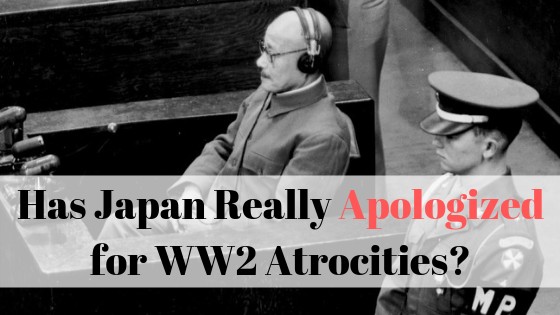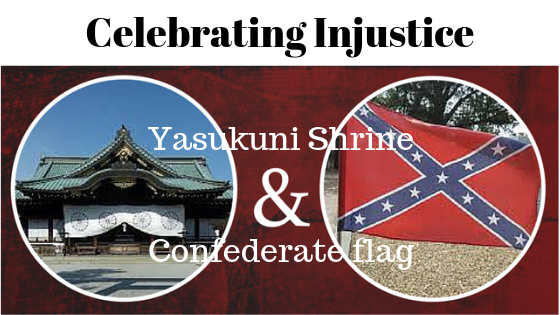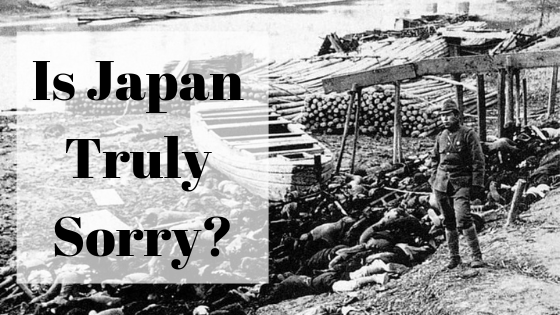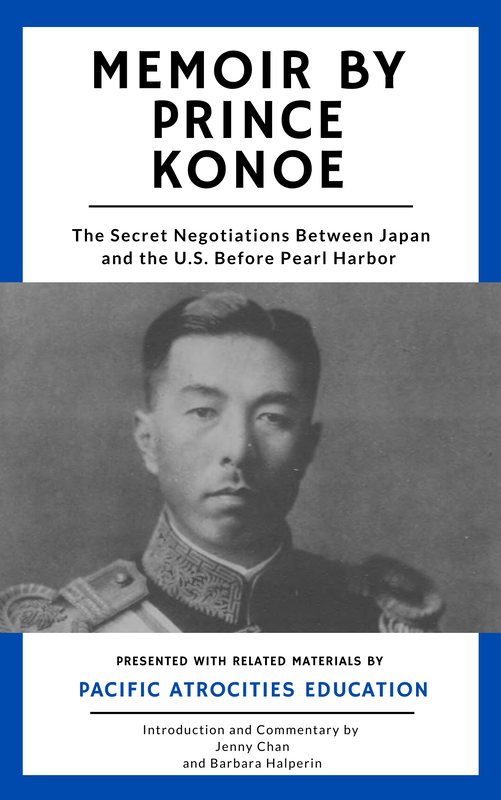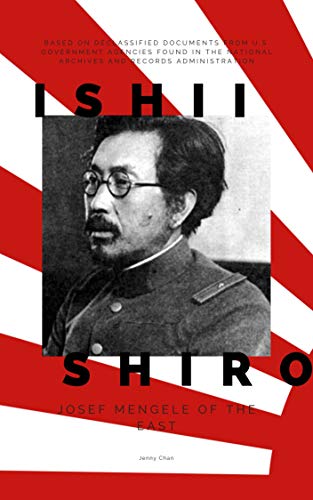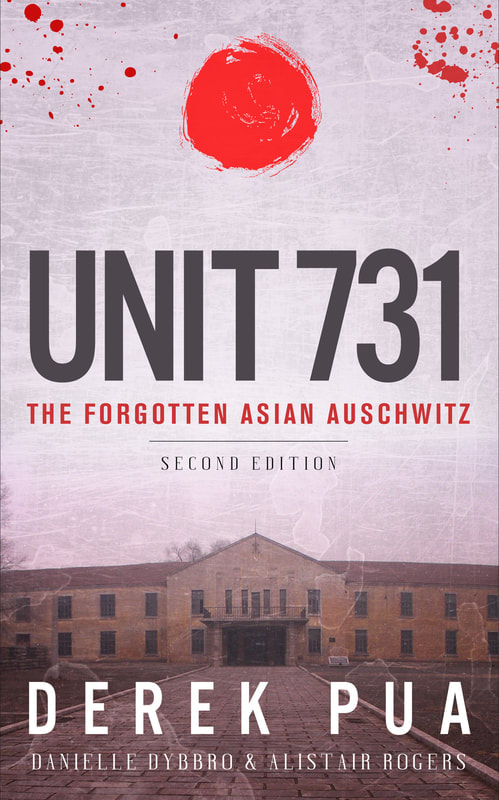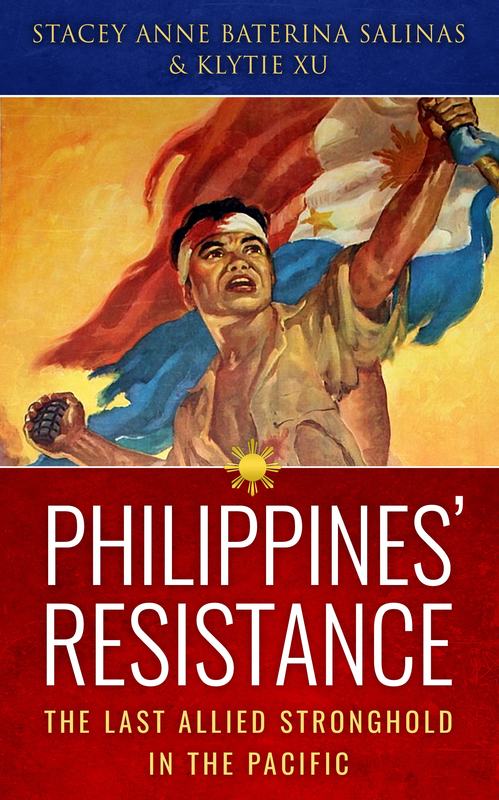|
by Nicole Dahlstrom Did Japan really apologize for the horrible atrocities committed by the Imperial Japanese Army during World War II? International headlines of Asians still demanding apologies from Japan’s current Prime Minister have many people across different age groups and backgrounds asking this question. (continued) If you’re wondering what some of those atrocities were, you are not alone. Little is taught to Western youth about the Pacific side of World War II. Almost anyone you ask can tell you about the Holocaust and Germany’s repentance since, but very few Westerners can answer the question of Japan’s apology to it’s victims in the Pacific Region. In order to answer this question, we need to first understand who those victims were. “R. J. Rummel, a professor of political science at the University of Hawaii, estimates that between 1937 and 1945, the Japanese military murdered from nearly 3 to over 10 million people, most likely 6 million Chinese, Taiwanese, Singaporeans, Malaysians, Indonesians, Koreans, Filipinos and Indochinese, among others, including Western prisoners of war.” The Imperial Japanese Army’s merciless massacres of civilians and prisoners of war is the reason for much of the controversy surrounding its role in Pacific World War II. Their gruesome resume includes atrocities such as; human experimentation(learn more here), biological warfare, use of chemical weapons, torture of prisoners of war, forced labor, sexual slavery, and perfidy. The ‘Tokyo Trials’ The majority of these war crimes and their perpetrators were tried under The International Military Tribunal for the Far East, which was formed to try accused people in Japan itself. These trials were known as the ‘Tokyo Trials,’ and they primarily tried class A war criminals. The ‘Tokyo Trials’ represent the first major setback for Japan on the road to an effective apology. Although the trials saw 920 war criminals executed, 475 receive life sentences, and 2,944 receive some prison time, they failed to indict Emperor Hirohito and allowed many other accused right-winged war criminals to serve in post-war Japanese governments. This failure has had multiple ramifications on how Japan, along with the rest of the world, understand the war. Japanese leaders were able to escape blame swiftly because of the international pressures of the Cold War. Former enemies of Japan embraced the nation as a new ally in the Pacific. Dr. Shiro Isshi, the leader of Japan’s biochemical weapons program, and his staff were actually able to trade the information obtained from their experiments in return for immunity in the Tokyo Trials. This type of pardon would be almost unfathomable for their German counterparts who caused the same kind of suffering through inhumane human experiments. Official Apologies For a comprehensive list of apologies issued by Japan please see this List of war apology statements. Over the past 75 years, Japan’s leaders and people have taken many opportunities to offer their sincere condolences and remorse to the victims made to suffer by the Imperial Japanese Army. These attempts, although not meaningless, have failed on a large scale due to the perceptions of the victims, as well as Japan’s own sentiment towards the war. Some of the most infamous victims of the Imperial Japanese Army include the euphemistically termed, ‘Comfort Women.’ Chinese experts estimate that around 200,000 women, mainly from Korea and China, were captured and coerced into providing sexual services before and during the war. Very few survivors of the ‘Comfort Women’ system are left alive today. In fact, the last Chinese ‘Comfort Women’ passed away this November 2015. The struggle ‘Comfort Women’ have faced in receiving the apology they call for outlines the struggles of many victims of Japanese wartime atrocities. Apologies have been insincere and inconsistent. What these victims are really seeking is not just any apology from Japan - they recognize there have been attempts made in the past. They are seeking a legislative apology put into motion and agreed upon by a majority of the Diet. This type of apology would be binding unlike those official statements that have come from Japanese leaders in the past. So, although there is a long list of official and unofficial apologies that have been issued, all have fallen short of what is actually desired by many victims. Revisionism and Whitewashing The final element in this complex issue reflects a notorious problem in history education and media. In many nations, including Japan, the history taught to youth is whitewashed or revised in order to create a better image for the nation and instill national pride. This problem presents itself in American school classes in regards to subjects like Native American history and the history of American slavery. The version of Pacific World War II history taught to Japanese youth is not spared this nationalist treatment. Widely accepted facts about atrocities are denied and parts of history are glossed over. This whitewashing and revising in education, paired with outright public denial of certain widely accepted facts, like those about the ‘Comfort Women’ system, has led many to question Japan’s sincerity when it comes to apologizing. So, did Japan Really Apologize for WWII? Officially, yes, Japanese leaders have issued countless statements of apology and remorse for the atrocities committed by the Imperial Japanese Army during WWII. Whether it be pride, ignorance, or political gain, there are many reasons as to why these apologies have not fully healed the wound that was left. One thing that continues to hold true is this: “Those who forget history are condemned to repeat it.” The best apology to the victims of any atrocity is to not forget them and their story. Related ArticlesRelated Books
20 Comments
pangsb
12/15/2015 03:35:15 pm
Compare the apologies coming from Germany, Japan's is insincere. One Prime Minister apologize the next Prime Minister could deny.
Reply
Willy
5/13/2018 03:41:42 pm
Oh, so do you tell me German paid reparation? German has not apologized as many times as Japan. By the way, for your ignorance, search for London Debt Agreement. Don’t twist the fact. Japanese government paid reparations much earlier to reestablish diplomatic ties with China and Korea.
Reply
Stillremembering
8/30/2018 08:13:13 am
Son you miss the point, Germany made a commitment to not repeat the past mistakes. The memorials and acknowledgement of the history is everywhere when you visit.
Wilson
7/3/2017 12:34:14 pm
I understand the US was/is a super power, but to push blame onto the country as if it is some sort of babysitter with supreme control to do such a thing is preposterous. Japan should have been punished more however it's not the US's fault nor responsibility to inact such a thing.
Reply
Willy
5/13/2018 03:32:23 pm
I am not sure exactly what they want? If it was an official apology, they got it. Right? Are they talking about monetary compensation?
Reply
Viviane Rose Wolfe
10/31/2018 12:55:24 pm
Read articles and books dear, you need it due to the clear stupidity you display.
Alice
5/25/2022 07:51:28 am
The amount of ignorance radiating off your stupid brain is actually concerning. Read a book
Anon
6/21/2023 11:23:58 pm
I hate to comment so late but what you're saying is just absolutely ridiculous, they want justice dumbass they want the people responsible for the warcrimes that happened in their countries to be held responsible and punished but thats not possible anymore is it seeing most of them lived out their natural lifespan already, and you wonder why china korea and other asian countries hate japan. Go fucking read a book before you decide to deny or undermine the existence of japanese atrocities.
Jeffry Purdy
8/9/2018 04:09:09 pm
I’m 44 and we were taught Japan was guilty of the most heinous crimes against humanity during WWII. Just what they did to the Chinese before WWII and the Okinawan during the battle of Okinawa. How are we losing the history of these atrocities? This is the modern digital age. Our kids should be more informed than we were but yet they don’t know who Churchill was. They know what Kim Kardashian ate for snack on whatever date.
Reply
Wonderland
11/27/2018 08:46:28 pm
To Korean people,
Reply
jyf
2/18/2023 03:08:46 pm
you might as denounce the holocaust is not true then...
Reply
Michael
3/12/2023 08:19:29 am
You are just a pathetic brainwahed japanese. Feel sorry for you.
Reply
As a representative of the Korean people, what you're saying is outrageously racist and ignorant. I can assure you that monetary compensation is not what we seek but for Japan to never revise their textbook history regarding the atrocities committed during WW2 and Japanese colonialism of Korea. Even our president Moon Jae-in dissolve the monetary compensation fund because Japan didn't issue a sincere apology. I advise that you disregard your provocative view and review the history behind this. Otherwise, you are just as ignorant as most Westerners.
Reply
NotfortheLDP
9/10/2020 03:15:54 pm
The real question is what is a true apology?
Reply
Hegelism
9/10/2020 03:43:30 pm
What history and experience teach us is this: that people and governments have never learned anything from history.
Reply
11/24/2021 12:26:54 am
I'm pretty aware of what went down in all the WW2 theaters of war. I'm not sure how much apologies help when you are looking at numbers like 45 million dead in Russia and China, and 10 million women raped.The US also had many rape-camps going in Japan, and the Soviets raped 2 million Frau in vengeance- killing 2 million German civilians as well. That really was an incredible de-escalation of butthurt feelings - and a way to teach the people of a nation that they are responsible for the actions of their military. I wish we lived in a nicer world, where that sort of thing wasn't necessary. The sad thing is - the USA essentially became the home of the 4th Reich after the war- hiding and then employing the worst Nazi war criminals (like the "Butcher of Lyon", von Braun, etc.)- promising them they could pick up Hitler's sword and shield - to fight his greatest enemy once more. I hear we apologized for that (the Dirty War) eventually - but more recently helped the Ukrainian junta in a similar fashion. Japan didn't do anything like that. Its actions that speak louder than words, and the USA pursued some pretty gnarly actions. Not at the same scale as the Nazis; but (for instance) many estimates of the dead in Iraq top 1 million.
Reply
Jun
6/3/2022 07:58:41 am
Some comments here are just border inhumane. Lol but let’s leave it as it is.
Reply
Lien
5/6/2023 03:45:37 pm
Comparing Japan's atrocities to the holocaust is non-sensical. The holocaust goal was eliminate an entire ethic group. For Japan genocide wasn't intent but conquest no matter the cost. And yes intent matters it's why there's different punishments for killing in law(i.e. man-slaughter). Those not in part of that specific group aka non-jews were treated much better. I.e. stories of Soviet troopers being treated far better in German camps than Russian gulags during WW2 Look it up if you dare. You should also think twice before commenting.
Reply
Anon
6/21/2023 11:02:52 pm
Comparing japan's atrocities to the holocaust is not non sensical you and all the other japanese bots above undermining their atrocities is, the intent doesnt matter in this case as the outcome is essentially the same that is the killing of a massive amount of the civilian population, sure in some ways German POW camps did treat Soviet troops better but that is only assuming those troops werent rounded up and killed straight after surrender.
Rosemary Hayes
11/15/2023 11:09:02 am
Nips dindunuffin wrongs
Reply
Leave a Reply. |
- Home
- Stories
-
Internship
- Summer 2024 Internship
- Summer 2023 Internship
- Fall 2022 Internship
- Summer 2022 Internship
- Summer 2021 Internship
- Fall 2020- Spring 2021 Internship
- Summer 2020 Internship
- Fall 2019 Internship
- Summer 2019 Internship >
- School Year 2018-2019 Internship
- Summer 2018 Internship >
- Fall 2017 Internship
- Summer 2017 Internship >
- Books
- Archives
-
Resource Page
-
Supplementary Research Guides
>
- Unit 731 - Guide >
-
Philippines' Resistance - Guide
>
- Philippines World War II Timeline
- The Japanese Invasion & Conquest of the Philippines
- Bataan Death March
- Formation of Underground Philippines Resistance
- Supplies of the Guerrilla Fighters
- The Hukbalahap
- Hunter's ROTC
- Marking's Guerrillas
- United States Army Forces in the Philippines of Northern Luzon (USAFIP-NL)
- The Aetas
- Chinese and Filipino-Chinese Nationalist Guerrilla Units
- The Female Faces of the Philippine Guerrillas
- Rising Sun Flag - Guide >
- Pinay Guerrilleras - Guide >
- Fall of Singapore - Guide >
- Three Years and Eight Months - Guide >
- Siamese Sovereignty - Guide >
- The Khabarovsk War Crimes Trial - Guide >
- Unit 731 Cover-up : The Operation Paperclip of the East - Guide >
- Marutas of Unit 731 - Guide >
- Prince Konoe Memoir - Guide >
- Competing Empires in Burma - Guide >
- Battle of Shanghai - Guide >
- Ishi Shiro - Guide >
- Taiwan The Israel of the East - Guide >
- Seeking Justice for Biological Warfare Victims of Unit 731 - Guide >
- Rice and Revolution - Guide >
- Clash of Empires - Guide >
-
Hunger for Power and Self-SufficiencyI - Guide
>
- The Influence of War Rations on Post-War Culinary Transformations
- How World War II Complicated Food Scarcity and Invention
- American Military Innovations
- Government-Sponsored Food Inventions in Europe during World War II
- Feeding the Army: The Adaptation of Japanese Military Cuisine and Its Impact on the Philippines
- Mixed Dishes: Culinary Innovations Driven by Necessity and Food Scarcity
-
Denial A Quick Look of History of Comfort Women and Present Days’ Complication - Guide
>
- The Comfort Women System and the Fight for Recognition
- The Role of Activism and International Pressure
- The Controversy over Japanese History Textbooks
- The Sonyŏsang Statue and the Symbolism of Public Memorials
- Activism and Support from Japanese Citizens
- The Future of Comfort Women Memorials and Education
- Echoes of Empire: The Power of Japanese Propaganda - Guide >
- Lesson Plans >
-
Supplementary Research Guides
>
|
Pacific Atrocities Education
730 Commercial Street San Francisco, CA 94108 415-988-9889 |
Copyright © 2021 Pacific Atrocities Education.
We are a registered 501 (c)(3) charity. |
- Home
- Stories
-
Internship
- Summer 2024 Internship
- Summer 2023 Internship
- Fall 2022 Internship
- Summer 2022 Internship
- Summer 2021 Internship
- Fall 2020- Spring 2021 Internship
- Summer 2020 Internship
- Fall 2019 Internship
- Summer 2019 Internship >
- School Year 2018-2019 Internship
- Summer 2018 Internship >
- Fall 2017 Internship
- Summer 2017 Internship >
- Books
- Archives
-
Resource Page
-
Supplementary Research Guides
>
- Unit 731 - Guide >
-
Philippines' Resistance - Guide
>
- Philippines World War II Timeline
- The Japanese Invasion & Conquest of the Philippines
- Bataan Death March
- Formation of Underground Philippines Resistance
- Supplies of the Guerrilla Fighters
- The Hukbalahap
- Hunter's ROTC
- Marking's Guerrillas
- United States Army Forces in the Philippines of Northern Luzon (USAFIP-NL)
- The Aetas
- Chinese and Filipino-Chinese Nationalist Guerrilla Units
- The Female Faces of the Philippine Guerrillas
- Rising Sun Flag - Guide >
- Pinay Guerrilleras - Guide >
- Fall of Singapore - Guide >
- Three Years and Eight Months - Guide >
- Siamese Sovereignty - Guide >
- The Khabarovsk War Crimes Trial - Guide >
- Unit 731 Cover-up : The Operation Paperclip of the East - Guide >
- Marutas of Unit 731 - Guide >
- Prince Konoe Memoir - Guide >
- Competing Empires in Burma - Guide >
- Battle of Shanghai - Guide >
- Ishi Shiro - Guide >
- Taiwan The Israel of the East - Guide >
- Seeking Justice for Biological Warfare Victims of Unit 731 - Guide >
- Rice and Revolution - Guide >
- Clash of Empires - Guide >
-
Hunger for Power and Self-SufficiencyI - Guide
>
- The Influence of War Rations on Post-War Culinary Transformations
- How World War II Complicated Food Scarcity and Invention
- American Military Innovations
- Government-Sponsored Food Inventions in Europe during World War II
- Feeding the Army: The Adaptation of Japanese Military Cuisine and Its Impact on the Philippines
- Mixed Dishes: Culinary Innovations Driven by Necessity and Food Scarcity
-
Denial A Quick Look of History of Comfort Women and Present Days’ Complication - Guide
>
- The Comfort Women System and the Fight for Recognition
- The Role of Activism and International Pressure
- The Controversy over Japanese History Textbooks
- The Sonyŏsang Statue and the Symbolism of Public Memorials
- Activism and Support from Japanese Citizens
- The Future of Comfort Women Memorials and Education
- Echoes of Empire: The Power of Japanese Propaganda - Guide >
- Lesson Plans >
-
Supplementary Research Guides
>
